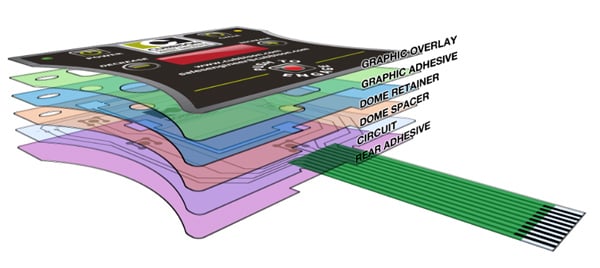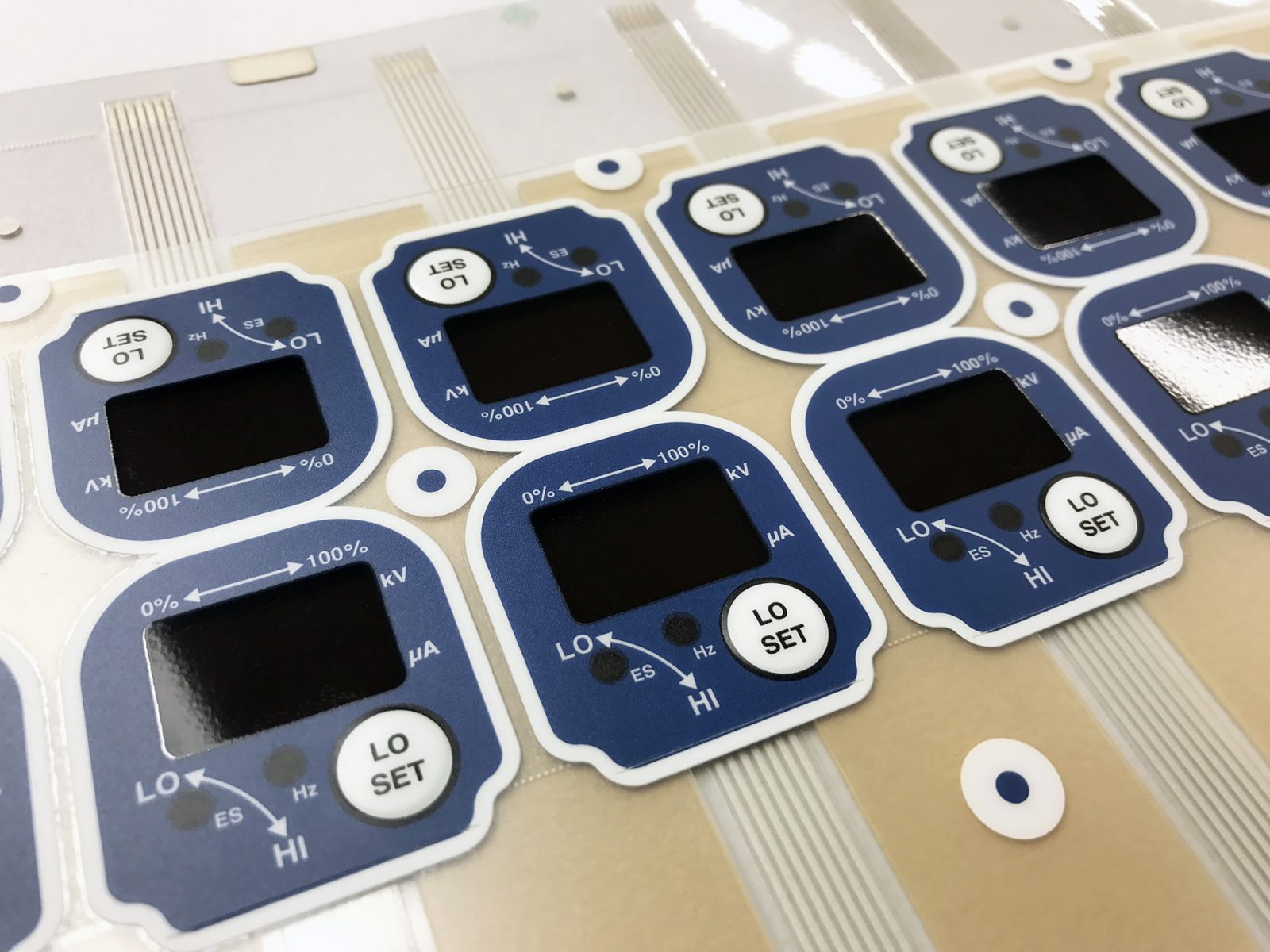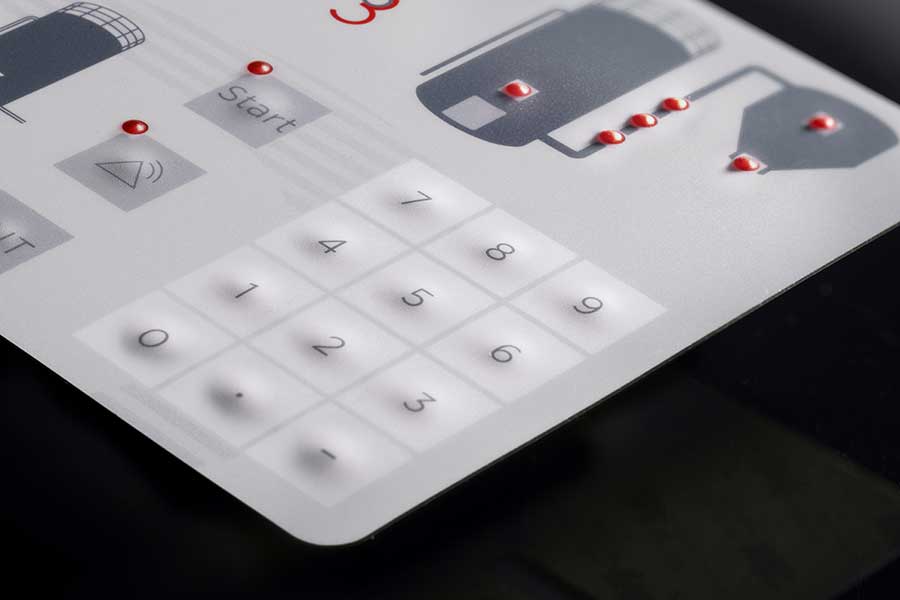Membrane Switches in the Aviation Technology: Important Applications and Benefits
Membrane Switches in the Aviation Technology: Important Applications and Benefits
Blog Article
Membrane Switch Over Innovation: The Trick to Trusted and Cost-Effective Interfaces
Membrane layer button technology has emerged as a pivotal part in the design of individual interfaces, supplying both integrity and cost-effectiveness across a diverse series of applications. Its robust building guarantees resistance to environmental difficulties, while the adaptability in design enables customized solutions that satisfy details sector demands. As we discover the multifaceted benefits of membrane buttons, their potential for technology raises questions about future applications and advancing patterns. What does the following chapter hold for this technology in an increasingly digital landscape?
Understanding Membrane Switch Over Technology
Membrane switch innovation is a commonly used user interface option in different electronic devices, supplying a seamless mix of capability and layout. This technology includes several layers of materials, usually being composed of a visuals overlay, spacer layer, and a circuit layer. The visuals overlay displays the user interface aspects, while the spacer layer separates the circuit layer from the overlay up until a customer triggers a button.
When pressure is applied to the overlay, the circuit layer finishes the electrical circuit, sending out a signal to the gadget. This device permits numerous setups, consisting of responsive feedback and backlighting alternatives, improving customer communication. Membrane switches are usually produced using durable materials such as polyester or polycarbonate, ensuring long life and resistance to environmental factors like dampness and dirt.
The adaptability of membrane switches enables their application in varied industries, consisting of medical gadgets, consumer electronics, and commercial controls. Their compact style allows for combination right into space-constrained atmospheres, offering an efficient interface without endangering aesthetic charm. Recognizing the complexities of membrane switch innovation is crucial for makers and developers seeking to produce dependable and efficient human-machine user interfaces.
Trick Benefits of Membrane Layer Buttons
While numerous user interface services exist, membrane layer switches deal distinctive benefits that make them a recommended choice in numerous applications. One of the main advantages is their sturdiness; membrane layer buttons are made to stand up to rough environmental conditions, including wetness, dirt, and temperature level fluctuations, making sure lasting performance. This durability dramatically lowers the requirement for constant substitutes, consequently decreasing general upkeep prices.

In addition, membrane layer switches are lightweight and compact, making them suitable for applications where area is limited. Their low-profile layout adds to a smooth appearance without endangering capability.
Cost-effectiveness is also a noteworthy advantage, as the manufacturing process for membrane layer switches often click to investigate tends to be cheaper contrasted to typical mechanical switches. This price, incorporated with their dependability and simplicity of installation, placements membrane switches as a sensible option for a large range of industries looking for effective and effective interface.
Applications Throughout Different Industries
How do membrane buttons adjust to the diverse demands of different industries? Membrane layer button modern technology is progressively identified for its convenience, making it appropriate for a large array of applications throughout multiple markets.
In consumer electronics, membrane layer buttons supply a portable solution for remote controls and home devices, boosting user experience with instinctive layout. Furthermore, the commercial field leverages membrane layer switches for machinery control panels, taking advantage of their resistance to harsh atmospheres, such as wetness and dust.
Armed forces and aerospace applications additionally utilize membrane switches for their dependability and capability to stand up to severe problems, ensuring operational effectiveness in important scenarios. The food and drink sector embraces these switches for automated systems, where sanitation and ease of procedure are paramount (membrane switch). Eventually, membrane layer buttons are tailored to meet the unique needs of each industry, confirming their important role in modern-day innovation interfaces
Design and Customization Options

In the realm of membrane layer button innovation, design and personalization options play a pivotal duty in improving functionality and individual interaction. These buttons can be tailored to meet details operational needs and visual preferences, making them flexible parts in different applications.
One of the key modification choices is the layout of the button itself, which can be created to check my reference accommodate special interface and ergonomic factors to consider. By readjusting the shape, dimension, and plan of switches, makers can develop user-friendly styles that assist in simplicity of usage. Furthermore, the unification of different colors and graphic overlays enables branding and improved exposure, making certain that users can swiftly identify features.
In addition, membrane switches can be crafted with various tactile comments devices, such as raised switches or audible clicks, to improve the customer experience. Different products can additionally be selected for toughness and environmental resistance, resolving elements such as wetness, temperature level changes, and chemical direct exposure.
Ultimately, the substantial design and personalization alternatives offered in membrane layer button innovation encourage businesses to produce tailored services that not only fulfill functional demands yet additionally align with their branding and operational requirements.

Future Patterns in Membrane Layer Buttons
As membrane layer button technology remains to evolve, future fads are increasingly concentrated on improving customer experience and incorporating advanced performances. One considerable fad is the assimilation of touch-sensitive and capacitive technologies right into typical membrane layer buttons. This growth permits more intuitive user interfaces, offering tactile comments while preserving a sleek design.
One more emerging pattern is using eco-friendly materials, driven by the growing demand for sustainable production methods. Makers are looking for to minimize their carbon footprint by making use of recyclable substratums and low-impact inks, lining up with international sustainability objectives.
Additionally, the increase of the Internet of Points (IoT) is motivating the consolidation of smart features right into membrane layer buttons. Enhanced connectivity alternatives will certainly allow gadgets to communicate with each various other, enabling for smooth integration into more comprehensive systems.
Additionally, improvements in printing technologies, click now such as digital printing, are permitting higher design adaptability and modification. This allows producers to produce detailed styles and lively colors cost-effectively.

Verdict
In verdict, membrane switch modern technology stands for an important advancement in customer interface layout, supplying substantial benefits in toughness, modification, and cost-effectiveness. As innovations continue to emerge, specifically in touch-sensitive interfaces and sustainable products, the potential for membrane layer switches over to boost customer experience and performance stays promising.
Report this page